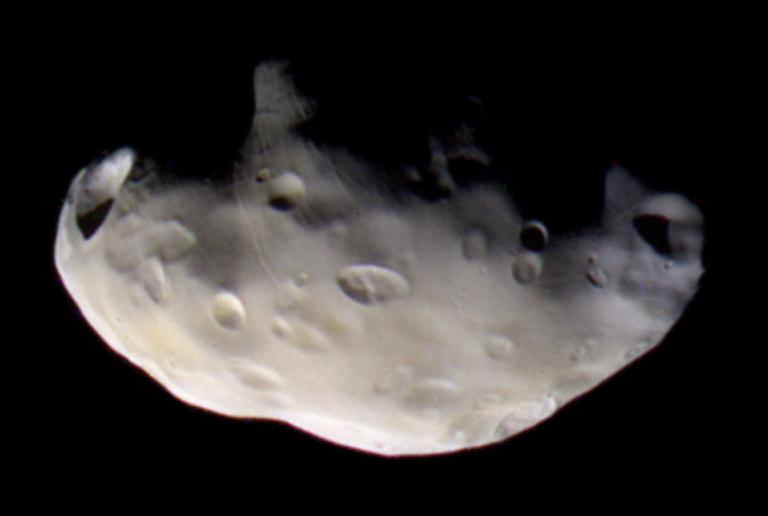Pandora

Pandora was discovered in October 1980 by the Voyager 1 science team.
Pandora, a potato-shaped moon, is coated in a fine (dust-sized) icy material. Even the craters on Pandora are coated in debris, a stark contrast to the crisply-defined craters of other moons, such as Hyperion. Curious grooves and ridges also appear to cross the surface of the small moon.
Pandora is interesting because it tends to disrupt the F ring, while Prometheus helps to keep the primary ring in place.
Pandora is about 25.3 miles (40.7 kilometers) in mean radius. It orbits 88,000 miles (142,000 kilometers) away from Saturn, near the F ring, taking 15.1 hours to go around Saturn.
Moons of Saturn were originally named for Greco-Roman Titans and descendants of the Titans. But as many new moons were discovered scientists began selecting names from more mythologies, including Gallic, Inuit and Norse stories.
Originally called S/1980 S26, Pandora was renamed in 1985. In mythology, Pandora (pan-DOR-uh) was a work of art who was transformed into a human by the gods. Her curiosity was said to have loosed all manner of ills upon the world when she let evil creatures out of a locked box; however, she is also responsible for hope entering the world ("hope" had been the last "creature" in the box).




